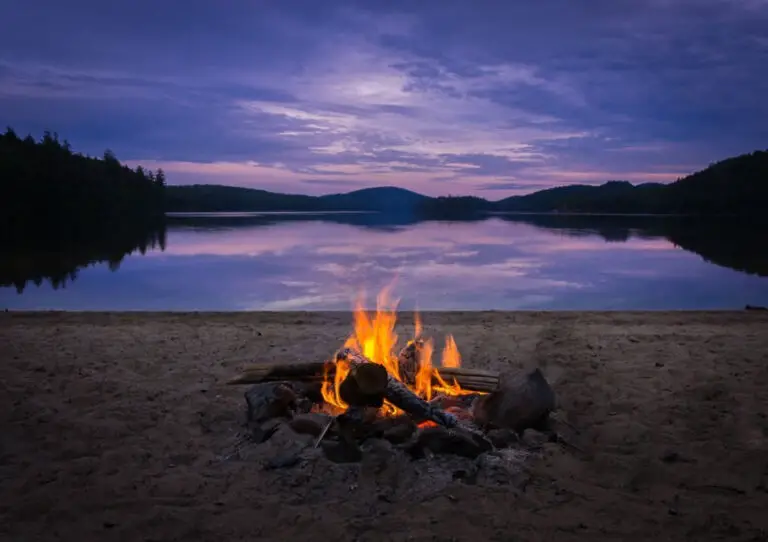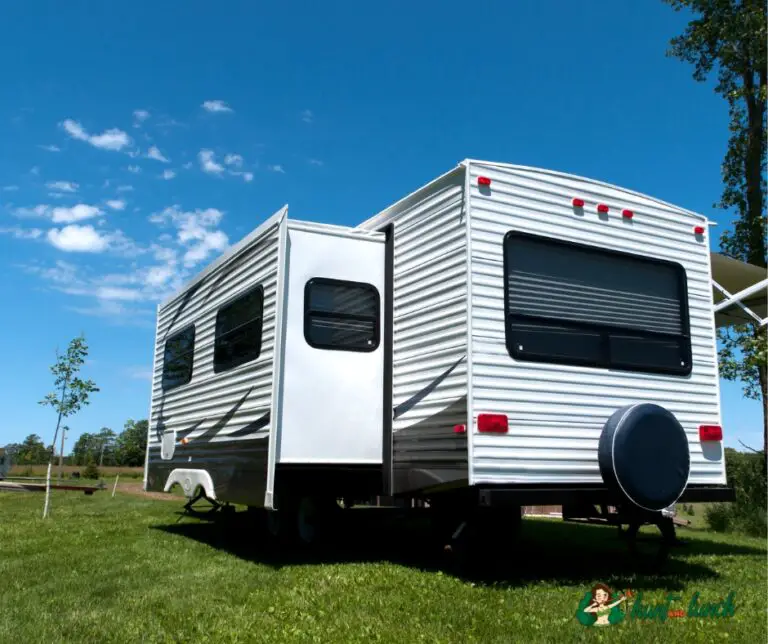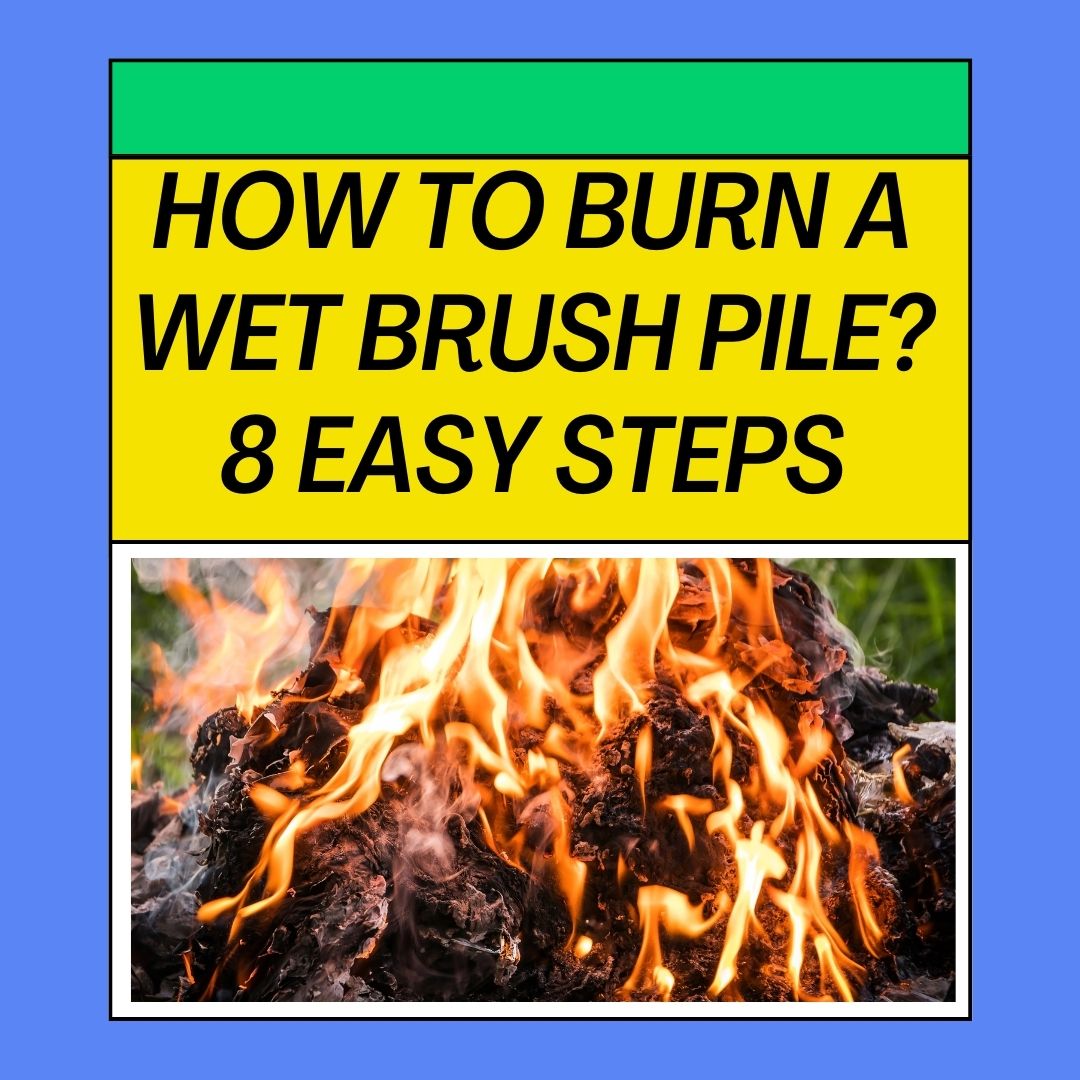
Burning a wet brush pile can be a daunting task, especially if you don’t know the right steps to follow. However, with the right tools, techniques, and precautions, you can safely and effectively burn a wet brush pile. In this guide, we’ll take you through the steps involved in burning a wet brush pile.
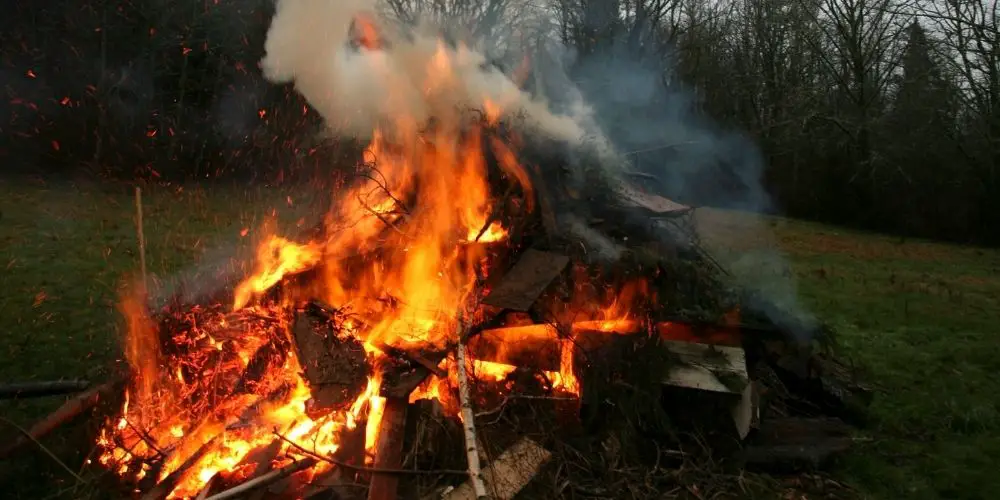
8 Steps To Burn A Wet Brush Pile Or Brush Pile In Rain
Burning a wet brush pile or brush pile in the rain can be challenging, but it is possible with proper precautions and steps. Here are the steps to follow:
- Check local regulations: Before burning a brush pile, check with your local authorities for any regulations or restrictions on burning. Make sure burning is allowed on that day.
- Choose a safe location: Choose a location for burning that is away from buildings, trees, and other flammable materials. Clear the area around the pile of any debris.
- Prepare the brush pile: Break up the pile to allow air to circulate and to help it dry out. It is important to wait until the brush pile is dry enough to burn.
- Create a fire break: Clear the area around the brush pile of any flammable materials, such as dry leaves, twigs, and grass. Use a shovel or rake to create a fire break around the pile.
- Use natural kindling: Instead of using accelerants, use natural materials such as dry brush, twigs, and kindling to start the fire. Stack them around the base of the pile.
- Light the fire: Use a lighter or match to light the kindling. If the fire does not start, you may need to wait until the brush pile dries out more before trying again.
- Monitor the fire: Once the fire has started, keep a close eye on it. Stay nearby, and have a shovel or garden hose ready to control any flames that spread outside the fire break.
- Extinguish the fire: When you are finished burning, make sure the fire is completely extinguished. Douse the fire with water and stir the ashes to make sure there are no smoldering embers.
Overall, burning a wet brush pile or brush pile in the rain can be challenging, but following these steps can help you burn the pile safely and successfully.
Burning Wet Wood and Brush Piles in the Rain: my firsthand experience.
It had rained heavily the previous night, and my backyard was littered with wet branches and leaves. I knew I had to clear the debris before they started rotting and attracting insects. Burning the wet brush pile was the most efficient way to get rid of it, but I had never done it before.
I decided to research the right steps to follow, and I learned that burning a wet brush pile requires careful planning and safety measures. I started by checking the weather conditions and obtaining a permit from the local authorities, as burning is usually regulated in some areas.
Next, I cleared the area around the brush pile, ensuring that there were no flammable materials nearby. I also created a fire break by removing any vegetation around the pile and digging a shallow trench. This would prevent the fire from spreading beyond the intended area.
I then used a rake to loosen the pile and create air pockets. This would help the fire spread evenly and prevent smoldering. I also kept a garden hose nearby and had a shovel to control the fire if needed.
With everything in place, I lit the pile using dry kindling, making sure to start at the center. I monitored the fire closely, making sure it didn’t spread beyond the fire break. I also kept adding dry brush to the pile to keep the fire burning.
After the pile had burned down, I used the shovel to spread the ashes and extinguished any remaining embers with the garden hose. I waited until the ashes were completely cool before disposing of them properly.
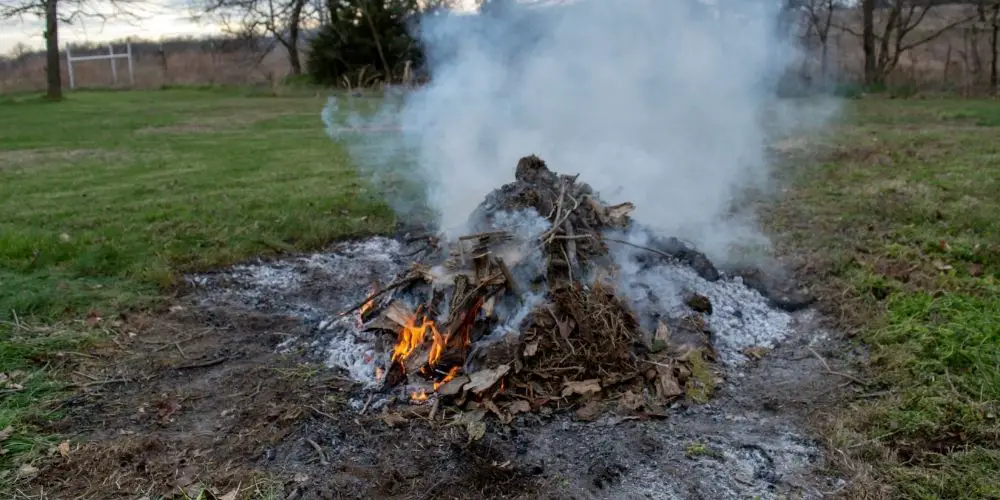
Best Accelerant To Burn Brush Pile
Using an accelerant to burn brush piles is generally not recommended as it can be dangerous and may release harmful chemicals into the environment. Accelerants such as gasoline, diesel fuel, and kerosene can increase the intensity of the fire and make it more difficult to control, leading to the risk of the fire spreading beyond the intended area.
Instead of using accelerants, it’s best to use natural materials such as dry brush and kindling to ignite the pile. Please make sure the brush pile is dry before lighting it, and create a fire break around the pile to prevent the fire from spreading beyond the intended area. Clear the area of any flammable materials and have a garden hose and shovel nearby in case the fire gets out of control. Always monitor the fire closely and extinguish it properly before leaving.
Overall, using accelerants to burn brush piles is unsafe and harmful to the environment. Sticking to natural materials and following proper safety measures is best to ensure a safe and successful burn.
10 Tips for Burning Slash Piles: Burn Pile Basics
Sure, here are 10 tips for burning slash piles or burn pile basics:
- Check the weather: Check the weather forecast and choose a day with light winds, moderate humidity, and no rain expected. Do not burn on high fire danger days or during burn bans.
- Choose a safe location: Select a location for burning that is at least 50 feet away from buildings, trees, and other flammable materials. Make sure there are no overhead power lines nearby.
- Clear the area: Clear the area around the pile of any debris or vegetation that could catch fire. Create a fire break by digging a trench around the perimeter of the pile.
- Prepare the pile: Pile the slash tightly to encourage a hot fire. Do not exceed the recommended height of the pile, which varies by location.
- Notify authorities: Notify your local fire department or forest service before you start burning. Obtain any required permits or approvals.
- Have firefighting tools: Have firefighting tools on hand, such as a shovel, rake, and water supply. A hose connected to a reliable water source is recommended.
- Light the pile safely: Use natural kindling or a commercially available fire starter to ignite the pile. Do not use gasoline, diesel fuel, or other accelerants.
- Monitor the fire: Stay near the fire and monitor it closely. Watch for spot fires outside the fire break.
- Extinguish the fire: When you are finished burning, make sure the fire is completely extinguished. Douse the pile with water and stir the ashes to make sure there are no hot spots.
- Be responsible: Always be responsible when burning slash piles. Follow local regulations and guidelines and ensure the fire does not pose a danger to people or property.
More FAQ Related to burning wet wood,
please note that burning brush piles may not be legal or safe in all areas. Always check with your local authorities before burning and follow proper safety measures.
Will A Wet Brush Pile Burn?
Yes, a wet brush pile can burn. However, it may take longer to dry out and ignite compared to a dry pile. You can speed up the process by turning and breaking up the pile to expose the inner layers to air and sunlight.
How To Burn A Wet Brush Pile?
To burn a wet brush pile, you need to create a fire break, clear the area around the pile of flammable materials, and have a garden hose and shovel nearby. Loosen the pile to create air pockets and light it using dry kindling. Monitor the fire closely and add dry brush to keep it burning.
Can You Burn A Wet Brush Pile?
Yes, you can burn a wet brush pile, but it may take longer to dry out and ignite. You may also need to take additional precautions to ensure safety, such as creating a fire break and monitoring the fire closely.
How To Burn A Brush Pile In The Rain?
Burning a brush pile in the rain is not recommended as it can be dangerous and difficult to control the fire. Wait for a dry day and make sure the brush pile is completely dry before attempting to burn it.
How To Light A Wet Brush Pile?
To light a wet brush pile, you can use dry kindling, newspaper, or other materials that can ignite easily. Make sure to light the pile at the center and monitor the fire closely.
How To Burn Brush Pile With Diesel/Fuel?
Burning a brush pile with diesel or fuel is not recommended as it can be dangerous and may release harmful chemicals into the environment. Stick to natural materials such as dry brush and kindling to ignite the pile.
How Long To Wait To Burn A Brush Pile?
It is recommended to wait at least six months before burning a brush pile to allow it to dry out completely. Make sure to check with your local authorities before burning and follow proper safety measures.
Can You Leave A Burn Pile Overnight?
Leaving a burn pile overnight is not recommended as it can be dangerous and can lead to the fire spreading beyond the intended area. Always monitor the fire closely and make sure to extinguish it properly before leaving.
How To Burn A Brush Pile Safely?
To burn a brush pile safely, you need to follow proper safety measures such as creating a fire break, clearing the area of flammable materials, and having a garden hose and shovel nearby. Monitor the fire closely and make sure to extinguish it properly before leaving. Always check with your local authorities before burning.
Conclusion
Burning brush piles in the rain is generally not recommended as it can be dangerous and difficult to control the fire. The moisture from the rain can make it challenging to ignite the pile and can cause the fire to smolder rather than burn, leading to the release of more smoke and pollutants. In addition, rain can make the surrounding area wet, increasing the risk of the fire spreading beyond the intended area.
If you must burn a brush pile in the rain, make sure the pile is as dry as possible before lighting it. You can speed up the drying process by breaking up the pile and exposing the inner layers to air and sunlight. It’s also essential to create a fire break around the pile and clear the area of any flammable materials. Have a garden hose and shovel nearby in case the fire gets out of control, and always monitor the fire closely.
Overall, it’s best to wait for a dry day to burn brush piles and always check with your local authorities before burning. Following proper safety measures is crucial to prevent accidents and ensure the safety of yourself and others.
Sources:
- National Park Service: https://www.nps.gov/articles/yose-pile-burning.htm
- Colorado State Forest Service: https://csfs.colostate.edu/burning-slash-piles-safely/



